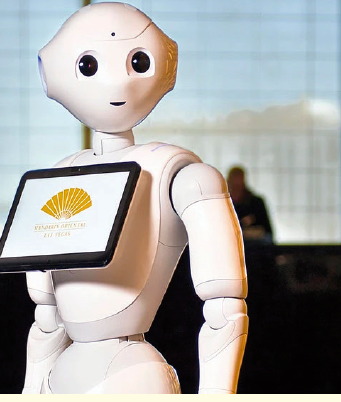ROBOT HOTEL: A SUCCESS OR FAILURE
Most Japanese newspaper had almost the same headlines in July 2015. The first hotel, which was staffed almost totally by robots was opened. From the receptionist that did the check-in and check-out, to the porter who took the luggage up to the room, this hotel in southwestern Japan, had a robot to do almost all the jobs at the hotel. (1)... .
Another feature of the hotel was the use of facial recognition technology, instead of the standard electronic keys. A digital image of a guest's face was taken during the check-in process. This is used by computers to recognise the person when he or she tries to get into a room. (2)... . The robots were not good at finding keys, if people lost them.
In the hotel's rooms, a lamp-size robot in the shape of a fat pink tulip called Tuly answers simple questions like, "What time is it?" and "What is the weather tomorrow?" The lights in the room were also controlled by Tuly. There were no switches on the walls. Robots running a hotel may seem expensive. But Sawada, the owner of the hotel, said the robots would help keep operation costs down. (3)... . "I wanted to highlight new technology," Sawada explained, adding, "I also wanted to do something about hotel prices going up." Staying at the Henn-na Hotel started at eighty dollars, which was a bargain in Japan. A stay in one of the nicer hotels there could easily cost two or three times as much.
Now in 2019 the situation is not what Sawada had planned.
When the hotel first opened there were around 80 robots. The initial positive reaction from the guests encouraged it to add many more for guests’ entertainment. (4)... . However, after only two or three weeks, half of those robots were not working. The other problem was Tuly in bedrooms. When it ran out of battery, it was almost impossible to do anything in the room, including switching the lights on and off. A guest said that he stayed only one night at the hotel and it wasn’t relaxing at all. He said the doll-shaped assistant roused him every few hours during the night in his room asking: “Sorry, I couldn’t catch that. Could you repeat your request?” By 6 a.m., he realised the problem: his heavy snoring was triggering the robot.
Sawada said that his initial aim was to have less employees to save from costs, now he has to have even more human workers as robots either fail to operate or need constant repairs. “After all, may be it wasn’t such a good idea”, he says.

